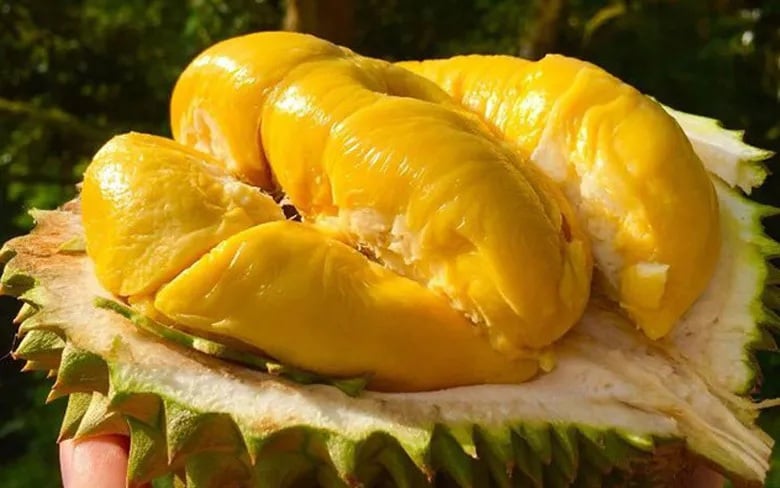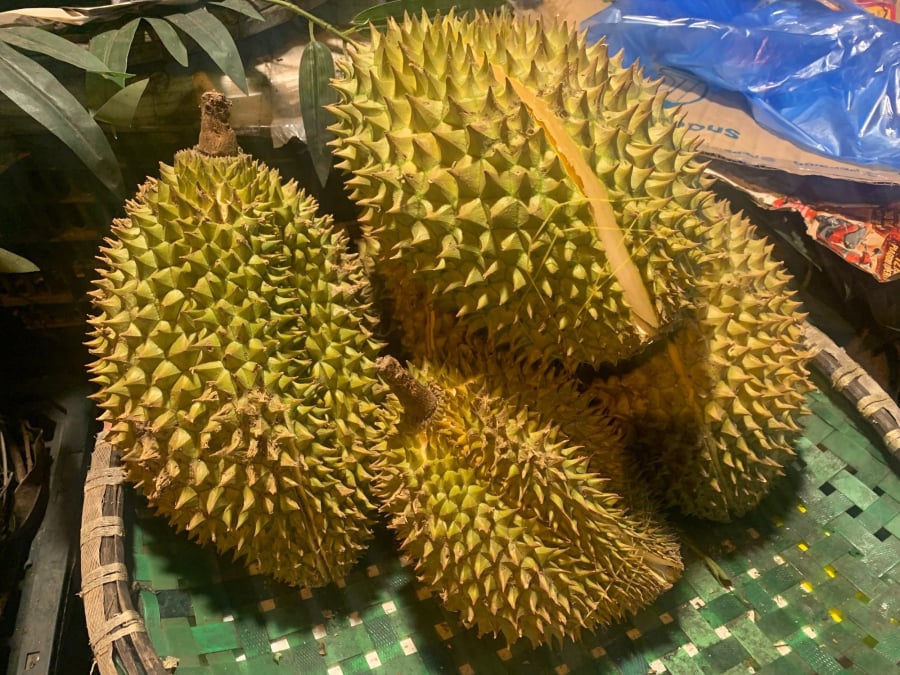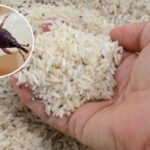Tap the Shell to Hear the Sound
A popular folk tip is to gently tap the durian shell to test its ripeness. Using your hand or chopsticks, tap lightly, and if you hear a deep, hollow sound, then the fruit is ripe with thick and dry flesh inside. On the other hand, if the sound is high-pitched and empty, the fruit may be unripe or have inferior seeds, not worth purchasing.

Inspect the Stem and Color of the Shell
The stem of a durian is a telltale sign of its freshness and quality. Look for a fresh, green stem that is firmly attached to the fruit—an indication that it was recently picked and is likely to be of good quality. Also, pay attention to the shell color: choose a fruit with a yellowish-green or light yellow shell, with natural slight cracks between the segments, avoiding overly green (unripe) or deeply cracked, dark yellow (overripe) shells.
Examine the Stem
Press the stem gently to check for freshness. If it’s still firm and oozes a bit of sap, it indicates the fruit is fresh and hasn’t been soaked in chemicals.
On the other hand, if the stem is wilted and dry, and the shell feels hard and lacks moisture when scraped, the durian has likely been stored for too long, affecting the taste and texture of the flesh.
Look at the Spines
To select a delicious durian, choose fruits with broad, stiff, and short spines that are sparsely distributed. These are female durians and tend to be more flavorful.
In contrast, avoid durians with sharp, thin, and dense spines that you can’t press down with your hand, as these indicate unripe fruit.
Especially, stay away from fruits with brown, frayed spine tips and cracks extending from the top—these are likely to have inferior seeds.
Observe the Shape
When purchasing, look for round or slightly oval-shaped durians with a distinct waist. Avoid misshapen fruits with indentations, as these tend to have inferior seeds and fewer segments.

How to Store Durian
Proper storage of durian is essential to maintain its freshness. If you’re not consuming it immediately, keep the whole fruit in a well-ventilated area, away from direct sunlight, and it will last for 2-3 days.
Once cut, separate the seeds, wrap them tightly in plastic wrap, and store them in an airtight container in the refrigerator (4-5°C) for 3-5 days. For longer storage, freeze the seeds in the freezer (-18°C) for up to 1-2 months, but remember to thaw them naturally before consumption to retain their flavor.
With these tips in mind, choosing delicious durian will no longer be a challenge. The next time you’re at the market, impress your companions with your newfound expertise in selecting this king of fruits!
The Ultimate Guide to Expired Sunscreen: Spotting Signs and Proper Storage
The sun’s rays can be harsh on your skin, and their damaging effects are often underestimated. The harmful UV rays can cause more than just a sunburn; they accelerate skin aging and increase the risk of skin cancer. It is crucial to understand that sunscreen alone might not provide adequate protection. Its effectiveness can diminish over time, leaving your skin vulnerable to sun damage, premature aging, and an elevated risk of skin cancer.



































